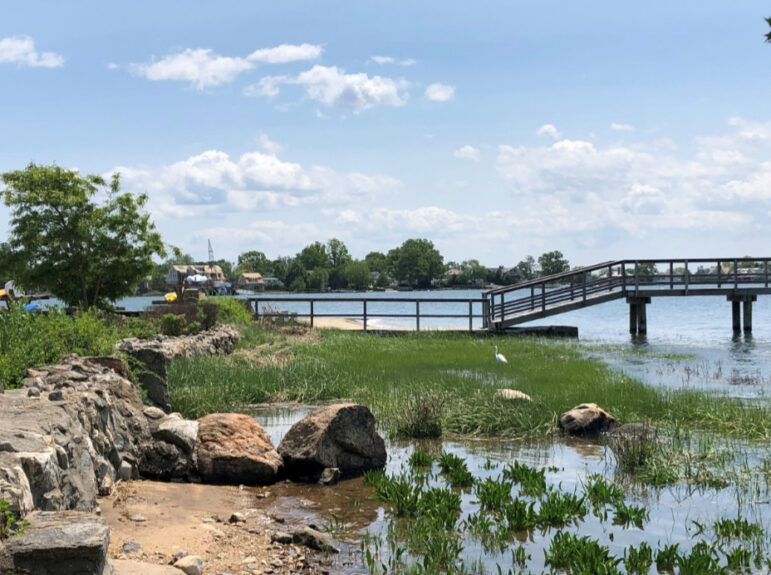The Greenwich Land Trust (GLT) has received a donation of land from Susan and Dean Allen adjacent to its Willowmere Parmelee Preserve in Riverside.
Though small, the conservation value of Willowmere Parmelee Allen Preserve is mighty. With the amount of development along the coast of Greenwich and Connecticut as a whole, conserving more than a half-acre of intertidal salt marsh habitat is vital to the ecological health of our coastal areas.

“We are pleased to donate this small tract of waterfront land on Long Island Sound located in Greenwich Cove to GLT to benefit the environment, plant life, and wildlife in the area. We have owned and lived beside the tract for 23 years and have loved watching the birds and sea life feeding amidst the sea grasses. The grasses themselves create beauty, changing colors throughout the seasons, as well as providing respite and habitat for various wildlife, while protecting the shoreline. We have confidence that GLT will support the conservation, preservation, and protection of this valuable tract,” the Allens said in a statement.
The history of the preserve began in 1972 when the Nature Conservancy transferred three parcels donated by Edna and Herbert Ferris and G. and Cornelia Curry to GLT (then known as Greenwich Audubon Society Land Trust Division).
The donation of the Parmelee property in 1980 enhanced the protection of this area by connecting the Willowmere and Parmelee parcels into one contiguous piece. With the addition of the Allen parcel, Willowmere Parmelee Allen Preserve now protects an even larger area along Long Island Sound supporting climate change resiliency and conserving critical coastal habitat.
The preserve is swept by freshwater from Ollie’s Creek, which runs from Binney Park and out into Long Island Sound. It also gets an influx of salt water as the tide goes in and out, which has made it ideal for marsh grasses and intertidal marine life. Willowmere Parmelee Allen Preserve includes areas with high marsh peat, low marsh peat, and tidal flats made of marine silt and clay. These areas are utilized by both aquatic organisms and many species of shore and migratory birds.
Spartina grasses dominate the plant species of this environment and create the foundation of a highly productive food web that is considered more productive than some of the most fertile soils in the Midwest. A variety of mammals, coastal birds, finfish, and shellfish depend on these coastal wetland habitats for feeding, resting, breeding, nursery areas, and shelter from predators.
Will Kies, GLT’s Executive Director said that preserving coastal habitat is critically important in helping mitigate climate change which has the potential to greatly impact our community.
“Through conservation, the Allens have not only expanded our existing preserve, but also maintained its
natural ecosystem. Greenwich Land Trust is grateful for Susan and Dean’s generosity and foresight
in protecting this important piece of land,” Kies said.